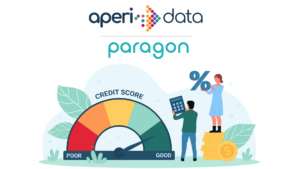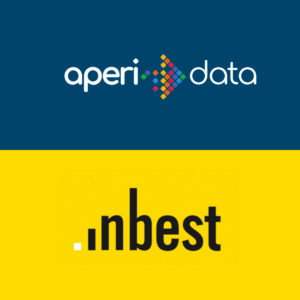How Open Banking can help meet the challenges faced in Originations
Lenders across all sectors have common requirements and challenges in making decisions on whether an applicant meets policy requirements for a product or service.
The requirements include:
- Compliance with appropriate lending regulations
- Assessment of an applicant’s financial status and affordability
- Assessment of an applicant’s payment history and creditworthiness
- Identify and fraud prevention
To compete in the marketplace and attract customers, lenders face the following challenges:
- Speed to decision and efficiency
- Obtaining accurate information around income and expenditure
- Ensuring decisions are made in line with policies
Legacy credit bureau data as used by the majority of lenders, while powerful in its own right particularly for identification of Voters Roll and Public Information is often not sufficient alone to enable decisions to be made, automated or otherwise. Information retrieved can be over a month out of date at the point of consumption and is by its nature a low resolution point in time snapshot of an applicant.
Additional information is often required from the applicant to support both “know your customer” and evidentiary requirements. This is often in the form of payslips and bank statements. The need to obtain this additional information adds time and effort to the application process for both lenders and applicants. Often the information provided is not in a form that is consistent or suitable for decision automation.
Open Banking has been the catalyst for sharing and using data in a safe and secure way through application programming interfaces (APIs). This data provides a rich, high resolution and most importantly up to date view of an applicant.
With regulated, standardised and secure digital frameworks for acquiring Open Banking data, lenders can harness this information to better understand applicants and make more accurate data-informed decisions, gaining the ability to effectively treat all applicants as if they were existing customers.
The structured nature of the Open Banking data allows it to be integrated directly into decisioning capabilities, allowing greater consistency and automation.
Open Banking is supported by a broad range of financial institutions, including all of the CMA9 banks. Adoption of Open Banking by both lenders and consumers continues to grow year on year. The number of consumers using Open Banking has reached over 7 million as of 2023, with 1.2 million being first time users.
Benefits to Lenders
Lenders benefit from Open Banking data in many areas, from improved operations and customer experience to better risk and fraud management and ultimately increased profitability.
- Rich up to date data means better, more consistent decisions. Lenders are able to approve more customers including marginal cases, reduce risk and offer the ‘best’ service or product for each applicant.
- Increased conversion rates, due to less onus on the applicant to find and provide additional information such as pay slips and bank statements.
- Reduced operational overheads (e.g. document scanning and storage) and costs.
- Fraud vector benefits by accessing financial data directly (reduced risk of counterfeit/adjusted documents).
- Income, affordability, risk, resilience and stability – know your customers and prospects better
- Fairer decisions and outcomes for customers in line with Consumer Duty requirements
- Ability to serve more customers, particularly where decisions made with traditional bureau data alone may be marginal.
- Customer experience – ease of sharing info, speed to decision, full data security.
Benefits to Applicants
Open Banking data benefits applicants in a number of ways, not only making it easier and faster to obtain credit but also enabling greater choice and fairer access to credit.
– Applicants retain control over how and by whom their data is used.
– Better access to credit for ‘new to credit’ and ‘thin file’ customers ill served by legacy bureaux.
– Speedier, more streamlined and efficient application processes for loans and mortgages, removing the need for slow, manual efforts of supplying paper copies of statements/proof of income and affordability checks.
– Better and more competitive offers across the market, as all lenders are set on a more level playing field with the incumbent banks that previously had sole access to the information from their current account holders.
– Improved and fairer consumer assessment for all types of employment and income. Historically, the suitability for a financial product was typically focused on a linear employment model of receiving regular salary/wage credits from a single employer. Recently there has been a shift towards more flexible, non-linear working e.g. (gig workers, self employed, contract working).
Operationalising Open Banking data
Using a decision engine with lending platforms makes the integration of Open Banking data straightforward, with minimal technical integration, minimal risk, and minimal outlay. The data-to-insights-to-decisions process can be delivered as a service in the cloud, which enables integration into customer journeys across decisions and communication channels.
Moreover, a decision engine allows easy integration of new data fields, new models, scores, calculations (e.g., affordability), and decisions. The decision engine provides the capability for the effective ongoing management of data-driven decisions, allowing quick and agile changes and updates to lending decisions due to changes in risk appetite or consumer cost of living, for example.
The ease of integration to analytics functions is also a significant advantage of using a decision engine. Lenders can apply advanced analytics to the Open Banking data to gain a deeper understanding of their customers’ behavior and preferences, enabling them to make more informed lending decisions. Customer journeys can be further enhanced through automated conversational messaging, for example if certain information is missing, not complete or needs verifying.
The ability to benchmark and improve decisions using champion/challenger and AI is another advantage of using a decision engine. These features allow lenders to test different decision-making rules and models, enabling them to continually optimize their lending processes.
Lastly, a decision engine provides control over calculations, such as for affordability, which is essential for regulatory compliance. The engine can be configured to use specific calculation methods, ensuring consistency across lending decisions.
In conclusion, using a powerful decision engine with lending platforms can help lenders integrate Open Banking data and make better informed decisions. The decision engine provides easy integration, flexibility, agility, and regulatory compliance, making it a powerful tool for lenders in the digital age.
What next?
Adoption and integration of Open Banking data into your organisation’s decisioning and Customer Management can come in various forms from a complementary non-integrated offering, able to be deployed in days through to a full integration into your existing platforms.
This article has been written in collaboration with Paragon, helping you to build and deploy better models, automate decisions and manage model risk and governance.
To find out more about how you can benefit from this please contact us.




